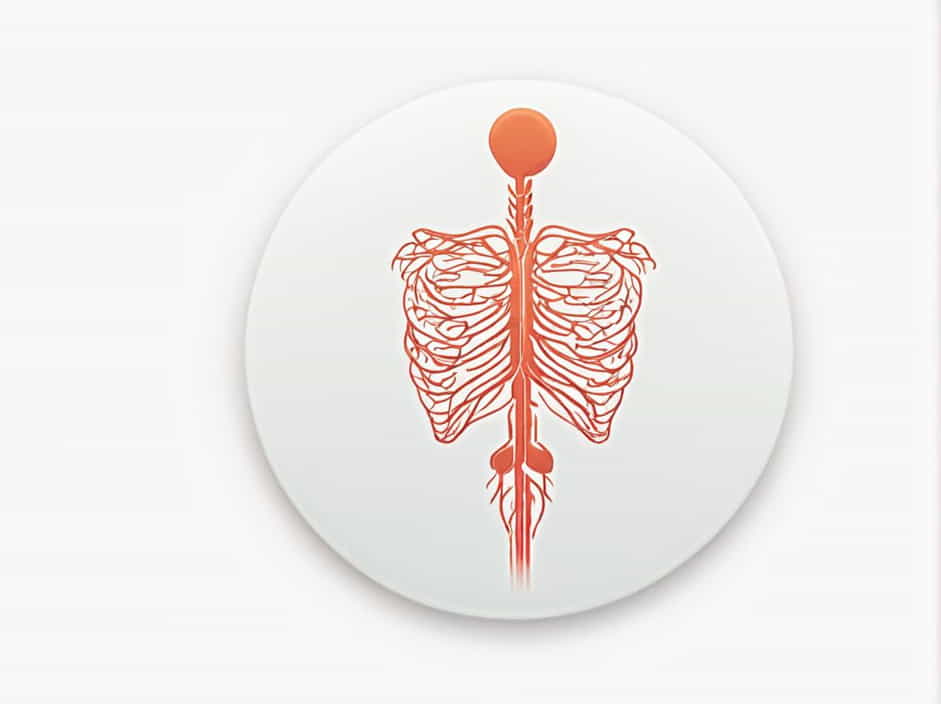The pectoral region consists of the chest muscles, primarily the pectoralis major and pectoralis minor, which play a crucial role in upper limb movement, breathing, and posture. These muscles receive nerve signals from a network of nerves originating in the brachial plexus. Understanding the nerve supply of the pectoral region is essential for medical professionals, physiotherapists, and fitness enthusiasts who want to understand how the chest muscles function.
This topic explores the nerves that supply the pectoral region, their origins, functions, and their role in muscle movement and coordination.
Overview of the Pectoral Region
The pectoralis major and pectoralis minor are the two main muscles in the pectoral region, responsible for various upper limb movements, such as flexion, adduction, and medial rotation of the arm. These muscles rely on nerve signals to contract and perform their functions effectively.
The primary nerve supply of the pectoral region comes from branches of the brachial plexus, a network of nerves that originates from the spinal cord (C5-T1 nerve roots) and supplies the shoulder, chest, and upper limbs.
Nerve Supply of the Pectoral Region
The pectoralis major and minor muscles are innervated by two main nerves:
- Lateral Pectoral Nerve
- Medial Pectoral Nerve
These nerves arise from the brachial plexus and control the movement and function of the pectoral muscles. Let’s discuss each in detail.
1. Lateral Pectoral Nerve (C5, C6, C7)
The lateral pectoral nerve is the primary nerve that supplies the pectoralis major muscle. It originates from the lateral cord of the brachial plexus and carries fibers from the C5, C6, and C7 spinal nerves.
Functions of the Lateral Pectoral Nerve
- Provides motor innervation to the pectoralis major muscle.
- Helps in flexion, adduction, and medial rotation of the shoulder joint.
- Assists in movements like pushing, lifting, and throwing.
Clinical Significance
- Injury to the lateral pectoral nerve can lead to weakness in arm movement, particularly difficulty in lifting objects or pushing.
- Can be affected in conditions like brachial plexus injuries or nerve compression syndromes.
2. Medial Pectoral Nerve (C8, T1)
The medial pectoral nerve arises from the medial cord of the brachial plexus and carries fibers from the C8 and T1 spinal nerves. Unlike the lateral pectoral nerve, it supplies both the pectoralis major and pectoralis minor muscles.
Functions of the Medial Pectoral Nerve
- Provides motor innervation to both pectoralis major and minor muscles.
- Helps in adduction and medial rotation of the arm.
- Assists the pectoralis minor in stabilizing the scapula and aiding in deep breathing.
Clinical Significance
- Injury to the medial pectoral nerve can cause weakness in chest muscle function, affecting arm movement and scapular stabilization.
- Can be affected in thoracic outlet syndrome and nerve entrapment conditions.
Other Nerves Associated with the Pectoral Region
While the lateral and medial pectoral nerves are the primary nerves supplying the pectoralis major and minor, other nearby nerves play supporting roles in pectoral region function.
1. Thoracodorsal Nerve (C6, C7, C8)
- Supplies the latissimus dorsi, which assists the pectoralis major in arm movements.
- Helps in shoulder adduction and extension.
2. Long Thoracic Nerve (C5, C6, C7)
- Supplies the serratus anterior muscle, which assists in scapular movement.
- Damage to this nerve can cause winged scapula, affecting pectoral muscle function.
3. Intercostal Nerves (T1-T6)
- These nerves run between the ribs and provide sensory and motor innervation to the chest wall and some fibers to the pectoral muscles.
- Play a role in breathing and chest expansion.
Role of Pectoral Nerve Supply in Movement and Function
The nerve supply of the pectoral region is essential for:
- Upper Limb Movement – The pectoral nerves allow for lifting, pushing, and pulling actions.
- Posture and Stability – The pectoralis minor stabilizes the shoulder blade, aiding in posture.
- Respiration Support – The pectoralis minor and intercostal nerves assist in deep breathing.
Common Nerve Injuries Affecting the Pectoral Region
Several conditions can affect the nerve supply of the pectoral region, leading to muscle weakness, pain, or loss of function.
1. Brachial Plexus Injury
- Can result from trauma, accidents, or nerve compression.
- May lead to loss of movement in the pectoral muscles.
2. Thoracic Outlet Syndrome
- Occurs when nerves and blood vessels are compressed near the pectoral region.
- Can cause pain, weakness, and numbness in the chest and arm.
3. Nerve Compression from Poor Posture
- Hunching or slouching can put pressure on pectoral nerves, leading to discomfort and reduced function.
- Maintaining good posture and regular stretching can help prevent this.
How to Keep the Pectoral Nerve Supply Healthy
To ensure optimal nerve function in the pectorals, consider these tips:
1. Regular Stretching and Strengthening
- Chest stretches help prevent nerve compression.
- Strength training keeps pectoral muscles and their nerves active.
2. Avoid Prolonged Pressure on the Shoulder and Neck
- Sitting with poor posture can cause nerve compression.
- Using ergonomic seating can help prevent issues.
3. Maintain Good Shoulder Mobility
- Shoulder exercises like arm circles and scapular retractions keep nerves functioning properly.
4. Seek Medical Attention for Nerve Pain
- If you experience persistent pain, weakness, or numbness in the chest or arm, consult a doctor for evaluation.
The nerve supply of the pectoral region is primarily controlled by the lateral and medial pectoral nerves, which originate from the brachial plexus. These nerves play a crucial role in upper limb movement, posture, and respiration.
Understanding the function of these nerves helps in diagnosing nerve-related injuries, improving muscle performance, and maintaining overall pectoral health. By practicing proper posture, regular exercise, and injury prevention strategies, you can keep the pectoralis muscles and their nerve supply functioning optimally.
